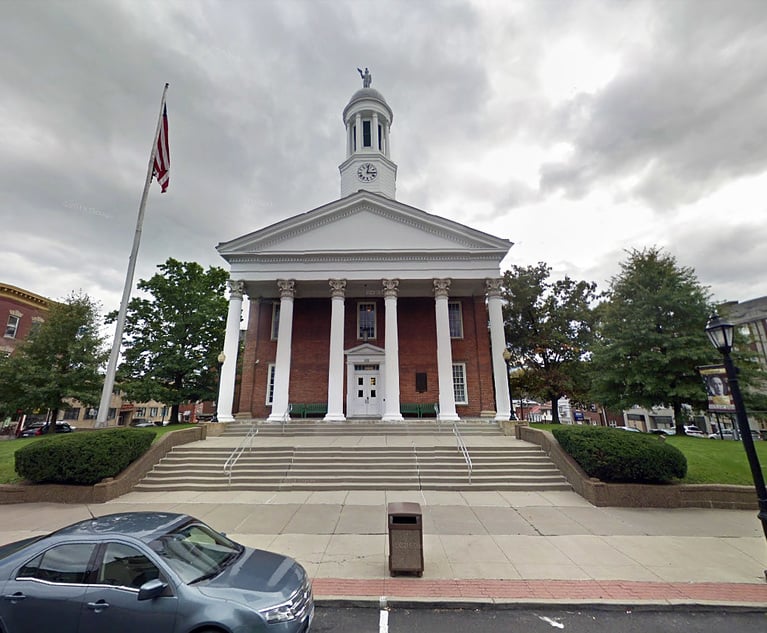 Larry Coben of Anapol Weiss. Courtesy photo
Larry Coben of Anapol Weiss. Courtesy photo Safety in the Skies: The Role of Our Courts
A very recent case decided by the U.S. Court of Appeals for the Ninth Circuit provides well-reasoned analysis of the role of the judiciary in deciding claims when tragedy occurs in the sky.
November 01, 2024 at 11:32 AM
6 minute read
The Federal Aviation Administration is charged with overseeing the United States' air traffic control system. Fortunately, it is rare that plane crashes arise on approach or departure from airfields. Air traffic controllers (ATC) are well trained to assist in providing "a safe, orderly and expeditious flow of traffic …" (13-ER-3160). However, on those rare occasions when tragedy strikes, inquiries lead to questions of fault that judges in federal courts are called upon to answer in accordance with the federal Torts Claims Act. Predicated upon the duties spelled out in the air traffic controller's manual and the common law that has evolved over the past 70 years, judges (most often without an advisory jury) serve as the factfinder in deciding whether an air tragedy was the result of an ATC's carelessness. A very recent case decided by the U.S. Court of Appeals for the Ninth Circuit provides well-reasoned analysis of the role of the judiciary in deciding claims when tragedy occurs in the sky. Note: The author of this article provided an amicus brief on behalf of the former chair of the NTSB, Christopher A. Hart. See Brown v. United States of America, 2024 U.S. App. LEXIS 14949 (9th Cir.).
John Brown and his passenger, James Elliker, flew into Reno-Tahoe airport in August 2016 in a Beechcraft A36 Bonanza. On their approach, a local ATC (Gregory Nicoll) assumed charge of sequencing their landing. On approach, there were also multiple large aircraft on paths for landing. Large aircraft create wake turbulence. The dangers of wake turbulence are very serious—and they are invisible. If a small airplane encounters the wake turbulence from a 757, the small airplane may not have the power to avoid a crash, needlessly causing serious injury or death to the pilot and passengers of the small airplane. One of ATC's responsibilities to pilots and incoming aircraft is to provide four miles of separation from "heavy aircraft"—to avoid the danger of its wake turbulence. That responsibility cannot be obviated or ignored even if the ATC "believes" a pilot sees other air traffic. That is not how this system of checks and balances is designed to work.
NOT FOR REPRINT
© 2025 ALM Global, LLC, All Rights Reserved. Request academic re-use from www.copyright.com. All other uses, submit a request to [email protected]. For more information visit Asset & Logo Licensing.
You Might Like
View All
Superior Court Directs Western Pa. Judge to Recuse From Case Over Business Ties to Defendant
3 minute read

Kline & Specter and Bosworth Resolve Post-Settlement Fighting Ahead of Courtroom Showdown
6 minute read
3rd Circ Orders SEC to Explain ‘How and When the Federal Securities Laws Apply to Digital Assets’
5 minute readTrending Stories
Who Got The Work
J. Brugh Lower of Gibbons has entered an appearance for industrial equipment supplier Devco Corporation in a pending trademark infringement lawsuit. The suit, accusing the defendant of selling knock-off Graco products, was filed Dec. 18 in New Jersey District Court by Rivkin Radler on behalf of Graco Inc. and Graco Minnesota. The case, assigned to U.S. District Judge Zahid N. Quraishi, is 3:24-cv-11294, Graco Inc. et al v. Devco Corporation.
Who Got The Work
Rebecca Maller-Stein and Kent A. Yalowitz of Arnold & Porter Kaye Scholer have entered their appearances for Hanaco Venture Capital and its executives, Lior Prosor and David Frankel, in a pending securities lawsuit. The action, filed on Dec. 24 in New York Southern District Court by Zell, Aron & Co. on behalf of Goldeneye Advisors, accuses the defendants of negligently and fraudulently managing the plaintiff's $1 million investment. The case, assigned to U.S. District Judge Vernon S. Broderick, is 1:24-cv-09918, Goldeneye Advisors, LLC v. Hanaco Venture Capital, Ltd. et al.
Who Got The Work
Attorneys from A&O Shearman has stepped in as defense counsel for Toronto-Dominion Bank and other defendants in a pending securities class action. The suit, filed Dec. 11 in New York Southern District Court by Bleichmar Fonti & Auld, accuses the defendants of concealing the bank's 'pervasive' deficiencies in regards to its compliance with the Bank Secrecy Act and the quality of its anti-money laundering controls. The case, assigned to U.S. District Judge Arun Subramanian, is 1:24-cv-09445, Gonzalez v. The Toronto-Dominion Bank et al.
Who Got The Work
Crown Castle International, a Pennsylvania company providing shared communications infrastructure, has turned to Luke D. Wolf of Gordon Rees Scully Mansukhani to fend off a pending breach-of-contract lawsuit. The court action, filed Nov. 25 in Michigan Eastern District Court by Hooper Hathaway PC on behalf of The Town Residences LLC, accuses Crown Castle of failing to transfer approximately $30,000 in utility payments from T-Mobile in breach of a roof-top lease and assignment agreement. The case, assigned to U.S. District Judge Susan K. Declercq, is 2:24-cv-13131, The Town Residences LLC v. T-Mobile US, Inc. et al.
Who Got The Work
Wilfred P. Coronato and Daniel M. Schwartz of McCarter & English have stepped in as defense counsel to Electrolux Home Products Inc. in a pending product liability lawsuit. The court action, filed Nov. 26 in New York Eastern District Court by Poulos Lopiccolo PC and Nagel Rice LLP on behalf of David Stern, alleges that the defendant's refrigerators’ drawers and shelving repeatedly break and fall apart within months after purchase. The case, assigned to U.S. District Judge Joan M. Azrack, is 2:24-cv-08204, Stern v. Electrolux Home Products, Inc.
Featured Firms
Law Offices of Gary Martin Hays & Associates, P.C.
(470) 294-1674
Law Offices of Mark E. Salomone
(857) 444-6468
Smith & Hassler
(713) 739-1250





